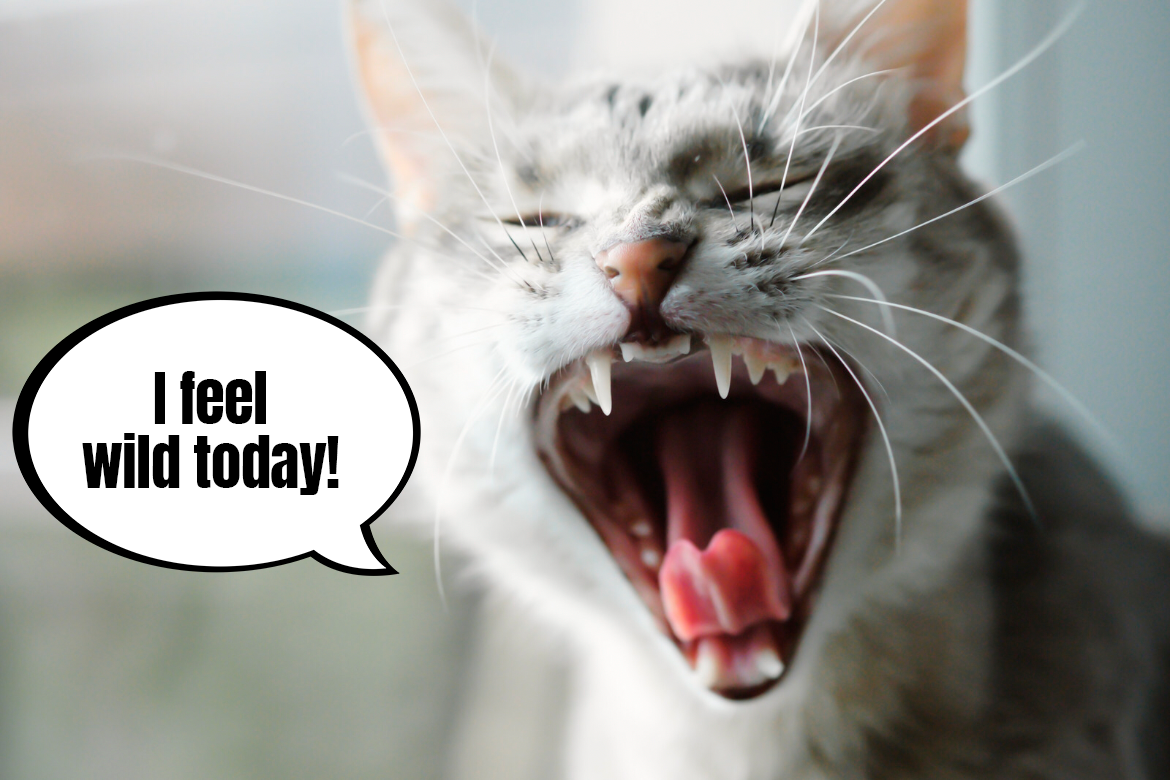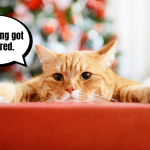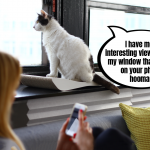How are you feeling after the Sunday celebrations? August 8th was the International Cat Day and we have to be honest – as fabCats we definitely had some good reasons to be happy. After all it was a special day for our furry friends who support us every day by waking us up at 4 am (t make sure we don’t sleep through the breakfast time!), putting their furry decorations on every going out shirt and showing how to sleep comfortably on the sofa and chill all day. On the International Cat Day we also remember that inside our domestic cats lies the energy of a wild panther and, if we’re looking close enough, we can see it even in the simplest, everyday cat behavior. What is especially visible to the naked eye and purrfectly documents the true nature of cats? null
Hunting masters
Cats on Instagram might seem like the cute sleepyheads, who’d gladly lay on the couch, cat bed or a scratcher all day. It seems like everybody knows that cats like to hunt flies passing by, observe ants walking around the floor or swat their paws at a bird flying by the balcony. But it’s only when people actually become cat Carers that they see it’s much more than just a fun time for a cat. It’s an inner need that can’t be stopped and an instinct that we should help our cats to fulfil.
Hunting takes up half of the 6-stage day cycle of a cat. Observe-catch-kill-eat-groom-sleep. Apart from the time they spend on raising their young or looking for a mate, wild cats organise their entire lives around this cycle. Domestic cats, though visually so different from a lion, a panther or a tiger, do the same thing everyday as well. There’s no gazelles frolicking around the savanna around them, but there are balls, feathers and wand toys. The toys should be the thing a domestic cat’s hunting focuses on. And to fully satisfy the cat, the play cycle finished up with a meal or a snack (and closing the hunting stage) should be repeated even a few times a day, focusing on a form of play that’s most suited to your cats.
It’s my territory
Your house cats probably won’t need to fight for the resources available to them at your house: for a comfortable place to sleep, a safe hideout, constant food supply (unless it’s with us :). It’s us, cat Carers, who have the task of providing our cats with everything that’s necessary for a happy cat life and, if we’re introducing another cat into the household, the task of making sure they get along just fine. Did you notice, however, that despite the lack of threat from other predators or other individuals of the same species, they are still fighting for their territory and every day, diligently and at all times they’re verifying if everything is still on its place. Just like wild cats!
Example one: scratching. After all, scratchers are the myKotty speciality and it’s not just a coincidence. Cats require scratching space at home, because scratching is not only a way of stretching and moving their muscles – it helps them leave their scent around and mark the territory that they see as their own. Scratchers are like road signs that scream “It’s Teddy’s house. I feel good and safe her. Beware, intruder”. Wild cats scratch on trees, house cats: on cardboard and sisal scratchers or, if they lack them (or they’re not in the right place), couches, carpets and even walls.
Example two: rubbing. That wonderful moment when you’re coming back home and find your cat around your legs, rubbing their head on you – no cat Guardian can resist an honor like this! Cats don’t just rubb to show their affection, but also to mark us! Their faces, especially around their cheeks, whiskers and chin have some strong scent glands that help cats to leave their mark on objects around their territory. Notice that cats’ target is not only the cat Guardians legs, but also corners of the couch, armchairs, scratchers, cat beds and everything where leaving their scent mark makes sense.
Obviously, wild cats use a third scent type to mark their territory: their own urine. At home, as long as we’re talking about a spayed/neutered cat without behavioral issues, marking with urine shouldn’t happen and using the litter box should have enough power for the cat’s marking needs. Cat’s nature can be tricky though, allowing the wild panther to come out a little bit too much sometimes. In such cases, consulting with a behaviorist may be necessary.
Keep your eyes wide open
Are your cats deep sleepers? So deep that moving around them, petting or even opening up the fridge doesn’t bother them at all? It’s possible, but we’re sure that at least 50-60% of their sleeping time is just light naps that they can wake up from in a matter of seconds. The reason is served on a silver platter here: light sleep is another sign of the wild cat energy rooted deep in our domestic cats. Cats, as predators, can still have natural enemies or individuals that want to take their territory away. They have to be always ready to protect or attack, say a prey that just came into their line of sight.
Domestic cats have their eyes wide open even if we think they’re closed shut. Sometimes waking them up mid-sleep can give a funny effect – a cat wakes up by the sound of a fly but quickly falls back asleep, leaving his eyes only partially closed. The cat Guardian has a unique opportunity to see the cat’s inner eyelid (screna) – we call it the “zombie mode”.
Don’t see anything, but I hear and smell everything
Both wild and domestic cats have some amazing sight abilities. However, their senses of smell and hearing are much more developed and they rely on them in almost every action they take. Cats in the wild rely on their hearing and smell to locate their prey while hunting or to find out if there’s a threat nearby. At home we can easily observe this by opening up the fridge, a can of food or by cutting raw meat on the cutting board – it doesn’t matter if the cat is in the litter box, on the balcony, in their hideout in the bedroom or on the highest level of their scratcher tower at the time. If there’s raw meat or another tasty treat on the table, the smell and sound are like a magic bell calling all the cats around the house.
Time to show your creativity, dear fabCats. What other behaviors typical for wild cats can you see everyday within your domestic furry friends? What situations make you think “I’m living under one roof with a tiger?”. Be sure to share your thoughts on the topic and tell us your funny stories that came about because of the inner wild cat nature in your kitties. We’re a little late, but we’re wishing your furry pals a meowtastic Cat Day. Give them a good rubbing and cuddles from the entire myKotty team 🙂




